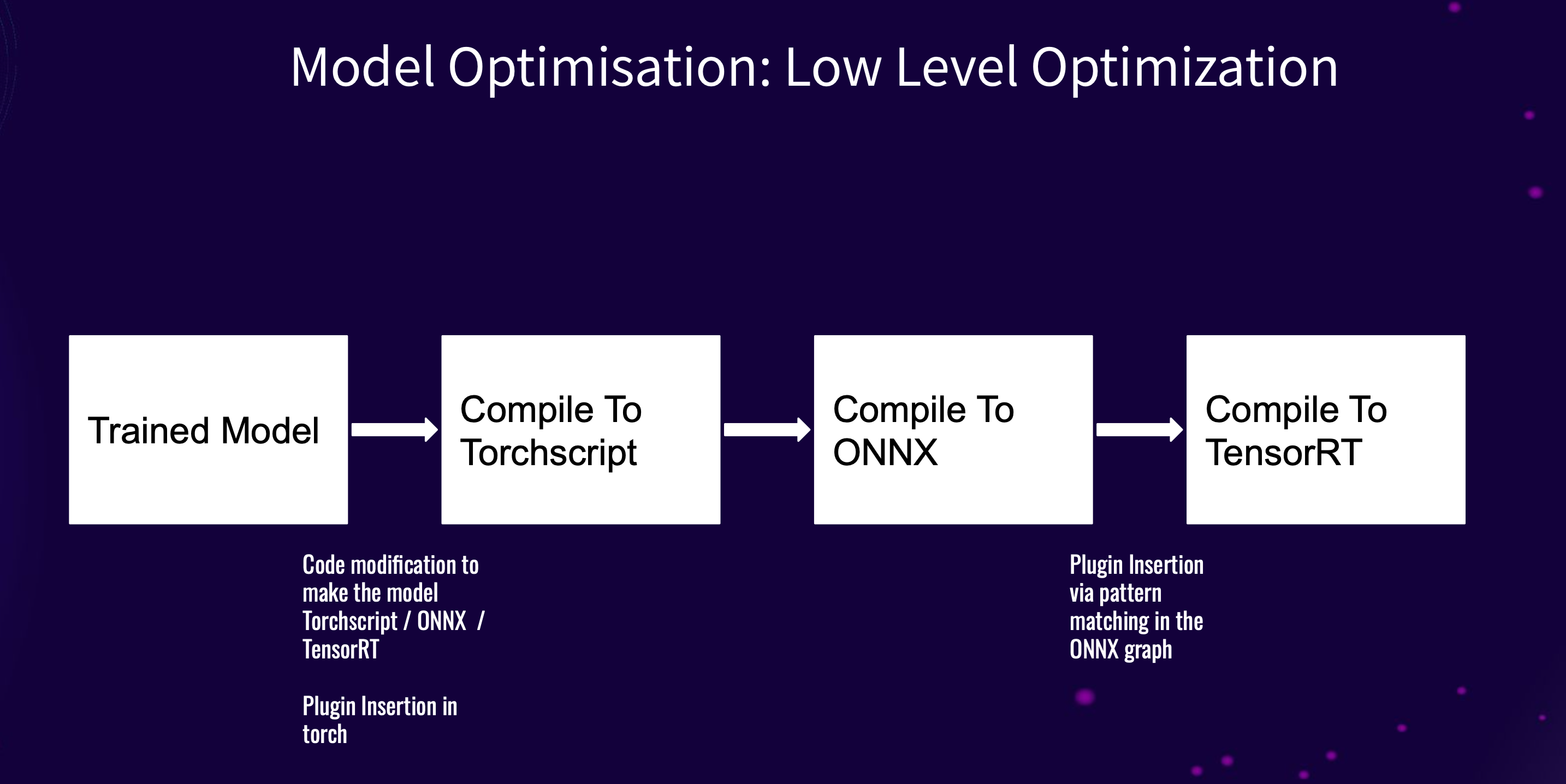
在长汀遛娃拍的反差照,一个好吃又好玩的县城,消费也不高~
TorchScript 是一种从 PyTorch 代码创建可序列化和可优化模型的解决方法,任何 TorchScript 程序都可以从 Python 进程中保存导出,并在非 Python 环境中加载。
PyTorch 官方提供了工具能将模型从纯 Python 程序转换为可以独立于 Python 运行的 TorchScript 程序,例如在独立的 C++ 程序中运行,这使得在训练侧,可以用机器学习领域熟悉的 Python 工具在 PyTorch 中训练模型,然后通过 TorchScript 将模型导出到生产环境中,避免在生产环境中,Python 程序因其性能和多线程等原因而降低了性能。
所以相比传统的 pth 文件,TorchScript 有如下优势:
- 独立性:
TorchScript模型是自包含的,包括模型架构和权重,因此它可以在没有Python的环境中运行 - 跨平台:可以在不同平台上运行,包括移动设备(iOS 和 Android)和嵌入式系统
- 推理优化:
TorchScript可以通过 JIT 编译器进行优化,能提高模型的执行速度 - 部署方便:由于其独立性、无依赖和优化特性,
TorchScript更适合用于生产环境中的部署 - 支持 C++ 前端:虽然
TorchScript能在多平台上运行,但对 C++ 的直接支持(一等公民)能为那些需要高效、低延迟执行的特定场景提供额外的优势
在 C++ 中加载 TorchScript 模型:
#include <torch/script.h> // One-stop header.
#include <iostream>
#include <memory>
int main(int argc, const char* argv[]) {
if (argc != 2) {
std::cerr << "usage: example-app <path-to-exported-script-module>\n";
return -1;
}
torch::jit::script::Module module;
try {
// Deserialize the ScriptModule from a file using torch::jit::load().
module = torch::jit::load(argv[1]);
}
catch (const c10::Error& e) {
std::cerr << "error loading the model\n";
return -1;
}
std::cout << "ok\n";
}
执行推理:
// Create a vector of inputs.
std::vector<torch::jit::IValue> inputs;
inputs.push_back(torch::ones({1, 3, 224, 224}));
// Execute the model and turn its output into a tensor.
at::Tensor output = module.forward(inputs).toTensor();
std::cout << output.slice(/*dim=*/1, /*start=*/0, /*end=*/5) << '\n';
PhotoRoom 在今年的 GTC 大会上分享其对模型优化方法时( Scaling Generative AI Features to Millions of Users Thanks to Inference Pipeline Optimizations ),也用到了 TorchScript:

不过,将模型编译为 TorchScript 时,虽然有工具链的支持,但仍然会遇到如下挑战:
- 动态特性限制:
Python的动态特性(如动态类型、反射等),在TorchScript中不被支持,需要重构代码以适应静态类型 - 不支持的操作:某些
Python操作或库函数可能不被TorchScript支持,需要找到替代方法 - 控制流:复杂的控制流结构(如条件判断和循环)可能需要调整,以确保
TorchScript能正确解析 - 调试困难:错误信息不够直观,调试
TorchScript代码可能比纯Python更具挑战性 - 第三方库兼容性:使用第三方库的自定义操作可能无法直接转换,需要实现自定义的
TorchScript操作 - 模型依赖:如果模型依赖于外部状态或全局变量,这些依赖需要在转换前进行处理。 这些挑战要求开发者在转换过程中仔细审视代码,并做出必要的修改以确保模型正确编译和运行
这是我尝试将一个小模型转换成 TorchScript 时遇到的问题:
List Comprehensions With Ifs not Supported
相对来说简单,List Comprehensions 本身也是语法糖而已,大不了改写掉。
SetComp aren’t supported
同上,但能感觉,这些常见的 Python 操作都不支持的话,对日常编码的要求是有点高的。
jit 不支持 set 类型
用 dict 替换 set,value 就固定写 True 吧,也没啥好办法,这是它支持的类型列表:supported-type,是个相当小的子集。
forward 函数的实现,避免使用非 tensor 类型
Module ‘xxx’ has no attribute ‘xx’ (This attribute exists on the Python module, but we failed to convert Python type: ‘list’ to a TorchScript type. Could not infer type of list element: Only tensors and (possibly nested) tuples of tensors, lists, or dictsare supported as inputs or outputs of traced functions, but instead got value of type xxxx.. Its type was inferred; try adding a type annotation for the attribute.):
TorchScript 对 forward 函数实现的要求极高,最终我是把其中部分实现移出去,比如一次性的计算能放在 __init__ 的就放在 __init__ 里,才解决的,具体的解法得 case by case,要注意的是 TorchScript 错误信息非常不明显,你得用一些更 hacky 的调试手段。
OSError: could not get source code
跟上面差不多,一般和某个特定类型有关,在我的例子里是 EmbeddingConfig,最终我在 forward 里移除了对它的依赖。
Expected integer literal for index but got a variable or non-integer. ModuleList/Sequential indexing is only supported with integer literals. For example, ‘i = 4; self.layers’ will fail because i is not a literal. Enumeration is supported, e.g. ‘for index, v in enumerate(self): out = v(inp)’:
只能用字面量做索引,不支持动态数组,开解循环可以解决,但不是一个好的解决方案。
Unable to extract string literal index. ModuleDict indexing is only supported with string literals. For example, ‘i = “a”; self.layers’ will fail because i is not a literal. Enumeration of ModuleDict is supported, e.g. ‘for k, v in self.items(): out = v(inp)’:
动态字典也不行,但加上类型注解后基本上就行了,由于我的 ModuleDict 中的 value 是一个自定义的 nn.Module,得显式的调用它的 forward,通过 __call__ 间接调用会被识别为创建实例。
Unsupported value kind: Tensor
和上面差不多,难在找到真正出错的代码块。
‘torch.beacon_torch.modules.attention.AttentionSequencePoolingLayer (of Python compilation unit at: 0x592c370)’ object has no attribute or method ‘call’. Did you forget to initialize an attribute in init()?
和上上差不多,显式调用 forward 可解决。
最后的感受:开发者要在转换过程中仔细审视代码,并做出必要的修改以确保模型正确编译和运行。
以上就是对 TorchScript 的第一印象,接下来会尝试模型的服务化(Triton & TorchServe),然后继续感受感受 AI 领域的工具,期待在这个过程中获得新的见解和成长。
